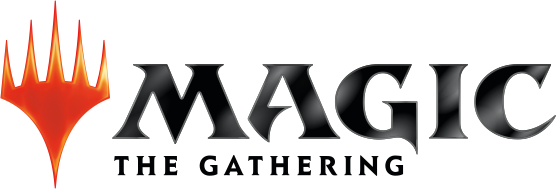Game Summary: What is MTG?

Magic is a competitive trading card game that plays out as a mix between chess and poker. Each player starts with a 60 card deck and 20 life points. You win the game by reducing your opponent's life total to 0. Players take turns using their cards, which can happen during their turn’s “main phase”. The players play cards known as “creatures”, which can attack their opponent on their turn or defend their life total. Creatures have power and health, which determines how much damage they deal or can withstand.
Competitive Formats
MTG has many different ways to play the games, commonly referred to as formats. These formats differ on the cards that players are allowed to play with and any deck creation limitations, such as the number of cards allowed in a deck. While there exist many formats, only two will be focused on Standard and Limited, the most common for professional play.
Standard

Standard is the flagship format of MTG. In Standard, the last two years of main expansions are allowed. Generally, this ranges from 5-8 sets at a time. As such, Standard is a constantly changing format. The format requires decks to be at least 60 cards with a sideboard of no more than 15 cards. Each deck (including the sideboard) can only have up to four copies of a single card. In this format, you get to build your deck with the cards you own, as long as those cards are legal in Standard (are part of the expansions within the cutoff). Due to the ability to make one's deck, card synergies and building around a clear game plan is very important in Standard.
Limited

Unlike Standard, you don't build a Limited deck out of your cards. Rather, you use cards that you obtain by opening up packs to build a 40-card (or more) deck. There are two variations of limited: draft, where you and 7 other people pick cards individually from 3 packs, and sealed, where you open 6 packs and use all of those cards to build a deck. Limited decks are only used for the draft/sealed event; the next one will require opening more packs. Limited archetypes and synergies are less of a focus than Standard due to the lower card pool. Generally, individual card strength is much more important instead of synergies.
Deck Archetypes
In MTG, there exist countless decks for each format, with new ones being developed when new sets are released. That being said, there are a few underlying archetypes that these specific decks are based on. Learning the archetypes can help one understand matchups and the meta as a whole.
Aggro
Aggro, short for "Aggressive", is an archetype that focuses on bringing the opponent's life total to 0 as quickly as possible. The deck plays low-cost creatures and spells that focus on dealing damage. The deck does not include many reactive cards, as it focuses solely on its game plan of winning as fast as possible. Expensive (cards that cost 5 or more mana) are typically excluded as well, as these decks want to win the game around turn 5-6. These decks exist in both Standard and Limited and are typically the first decks to exist when a format sees a major change, like a set being added or rotated, due to their proactive game plan. Aggro tends to beat control decks by being very fast, but the Midrange decks beat it with their bigger creatures.
Below are some examples of aggressive decks.

Control
Control is an archetype that focuses on reacting to the opponent's cards and winning a long game. Control decks focus on removal and counterspells over creatures. They also include lots of card draw, trying to exhaust all of the opponent's resources. Their path to victory lies in including a few high mana cost creatures or planeswalkers that can win the game on their own. These decks are less prominent in Limited but are common in Standard. These decks tend to do well against midrange but fall short of aggro, as control is a bit too slow.
Below are some examples of control decks.

Midrange
Midrange is an archetype that plays a slower game than aggro but still has a proactive, aggressive game plan. Midrange decks focus on creatures that are not too expensive in mana cost but are also not as low-cost as aggro decks. These decks still try to win by attacking the opponent but focus more on value. More card draw and removal spells are present in midrange compared to aggro decks. Midrange is very common in Limited and Standard. These decks tend to do well against aggro but are too slow for control.
Below are some examples of midrange decks.
